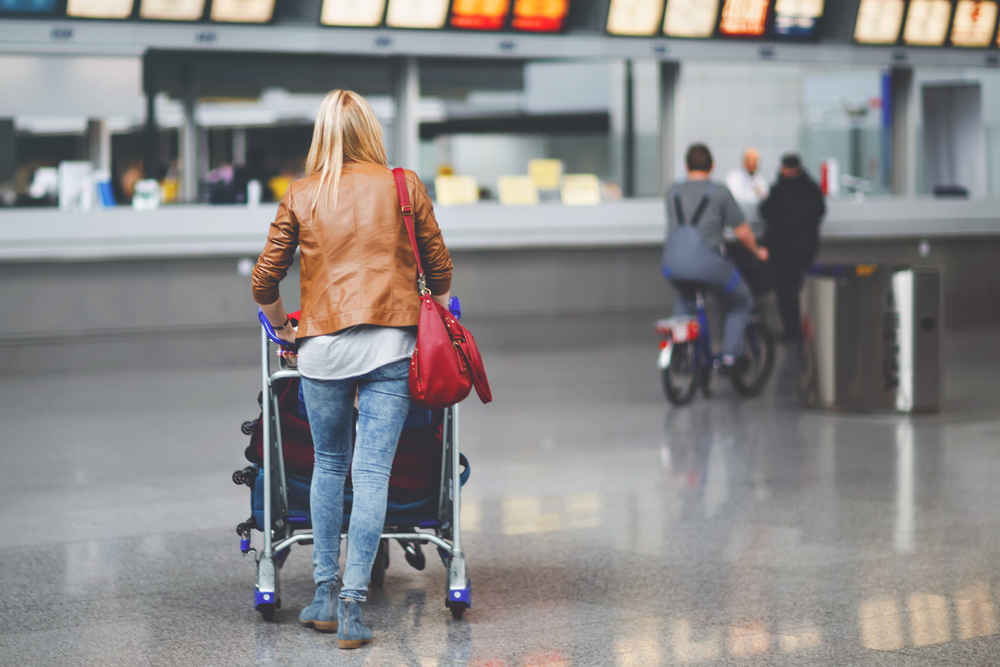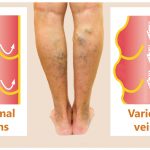Minimizing Varicose Vein Symptoms During Holiday Travel
 We’re all hoping this holiday season feels a bit more normal than this time last year, and for most, that means traveling to see family and friends for celebrations. However, anyone who suffers from varicose veins can attest that spending hours cramped in a car or plane can be uncomfortable. When legs are idle, so is circulation, which leads to slow blood flow and aching, swollen limbs. An increased risk of deep vein thrombosis (DVT) is also present while traveling with varicose veins.
Fortunately, there are effective ways to minimize varicose vein symptoms, so pain and discomfort don’t have to wreck your holiday travel plans.
We’re all hoping this holiday season feels a bit more normal than this time last year, and for most, that means traveling to see family and friends for celebrations. However, anyone who suffers from varicose veins can attest that spending hours cramped in a car or plane can be uncomfortable. When legs are idle, so is circulation, which leads to slow blood flow and aching, swollen limbs. An increased risk of deep vein thrombosis (DVT) is also present while traveling with varicose veins.
Fortunately, there are effective ways to minimize varicose vein symptoms, so pain and discomfort don’t have to wreck your holiday travel plans.
Utilize Compression Stockings
Compression stockings are medical-grade socks that use graduated pressure from the ankle to the knee to support blood flow from the legs to the heart. Available over the counter and in prescription strength, compression stockings are recommended for patients suffering from varicose veins to reduce throbbing, swelling, and painful leg cramping while traveling long distances.Avoid Constricting Clothing
Constricting clothing can exacerbate painful symptoms of varicose veins by hindering proper circulation. While you may think that skinny jeans are an excellent alternative to compression stockings, they can make vein pain and leg fatigue worse. Compression stockings are designed to be constricting in a medically specific way, and tight clothing cannot offer the same benefits. When traveling, opt for loose-fitting clothing and avoid changing for a few hours after the arrival.Stretch and Move Every 1-2 Hours
Sitting for extended periods even with plenty of legroom can limit blood flow to the legs – especially when they’re crossed. It’s crucial to stop every 1-2 hours while driving to stand up and move around to keep your blood circulating. When traveling by plane, get up and walk the aisles for a few minutes every couple of hours to stimulate the circulation in your legs.Do Stationary Exercises In Your Seat
If space constraints prevent you from taking much-needed stretching breaks while traveling, there are still effective ways to keep the blood circulating from your seat. Stationary exercises like pumping your foot up and down are a simple yet effective way to stretch your calves. Other exercises include flexing your feet, pointing your toes, and rotating your ankles in small circular motions.Elevate Your Legs When Possible
The first thing you’re going to want to do when reaching your destination is to hit the ground running; however, anyone suffering from painful varicose veins should make sitting and elevating their legs a priority after arrival. Sitting with your legs elevated will reduce the pressure of gravity and allow blood to flow easily back up to your heart.Treating Varicose Veins Before a Big Trip
If you find yourself avoiding any long-distance travel because varicose veins make the process unbearable, it’s time to consider having your veins treated for a permanent solution. At Vein & Laser Institute, we offer several different treatment options, allowing us to customize each treatment of varicose veins for our clients. Treatments are minimally invasive, with only conscious sedation being administered. You can expect to walk out after your treatment but will need a driver to take you home. You may then return to normal activities but could experience tenderness or soreness at the site of the procedure. A pulling/tight feeling 5-7 days after the procedure and bruising is an average effect of the healing process and expected. We pride ourselves on our state-of-the-art vein treatments, experienced physicians, caring team, and welcoming office atmosphere. Our interventional radiologists have years of experience treating varicose veins and spider veins with a variety of procedures. Contact us today to schedule a consultation with our highly skilled and experienced providers.Recent Posts



